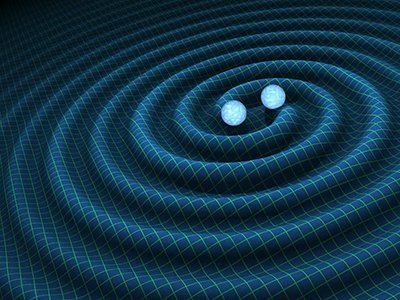Syracuse University Makes History
Finding coincides with 100th anniversary of Einstein's Theory of Relativity (VIDEO)

For the first time, scientists have observed ripples in the fabric of spacetime called gravitational waves, arriving at the earth from a cataclysmic event in the distant universe. This confirms a major prediction of Albert Einstein’s 1915 general theory of relativity, and opens an unprecedented new window onto the cosmos.
Gravitational waves carry information about their dramatic origins and about the nature of gravity that cannot otherwise be obtained. Physicists have concluded that the detected gravitational waves were produced during the final fraction of a second of the merger of two black holes to produce a single, more massive spinning black hole. This collision of two black holes had been predicted but never observed.
The gravitational waves were detected on September 14, 2015, at 5:51 a.m. Eastern Daylight Time (9:51 a.m. UTC) by both of the twin Laser Interferometer Gravitational-wave Observatory (LIGO) detectors, located in Livingston, Louisiana, and Hanford, Washington, USA. The LIGO Observatories are funded by the National Science Foundation (NSF), and were conceived, built, and are operated by Caltech and MIT. The discovery, accepted for publication in the journal Physical Review Letters, was made by the LIGO Scientific Collaboration (which includes the GEO Collaboration and the Australian Consortium for Interferometric Gravitational Astronomy) and the Virgo Collaboration using data from the two LIGO detectors.
A team of physicists from Syracuse University’s College of Arts and Sciences has been instrumental in the discovery. They include Peter Saulson, the Martin A. Pomerantz ’37 Professor of Physics; Duncan Brown, the Charles Brightman Endowed Professor of Physics; Stefan Ballmer, assistant professor of physics; and a group of nearly two dozen students and research scientists.
The following video, featuring several members of the Syracuse University Gravitational Waves Group, helps to explain the science behind LIGO and how this incredible discovery will impact the future of the study of astrophysical science.
Featured
Peter Saulson Professor Emeritus
Duncan Brown Vice President for Research, Syracuse University; Charles Brightman Endowed Professor of Physics
Stefan Ballmer Professor and Director for the Center for Gravitational Wave Astronomy and Astrophysics
